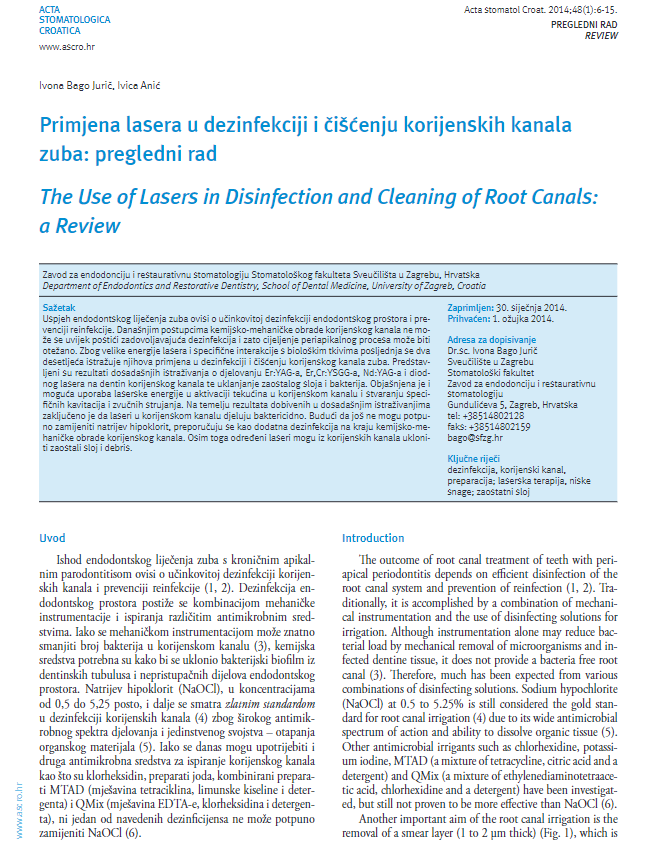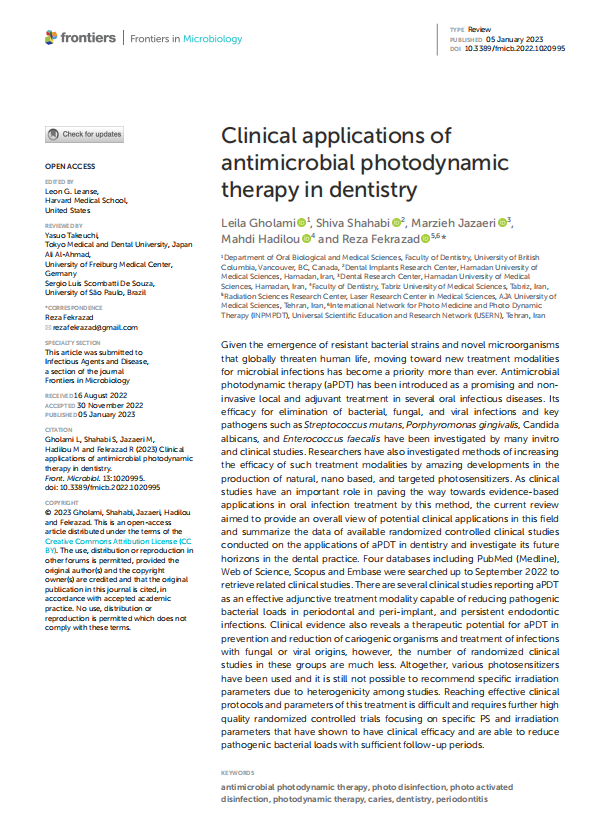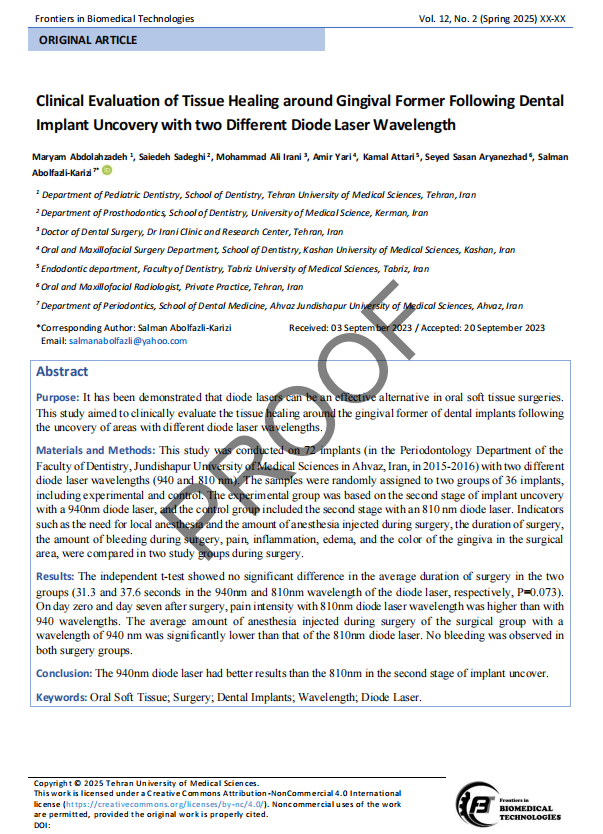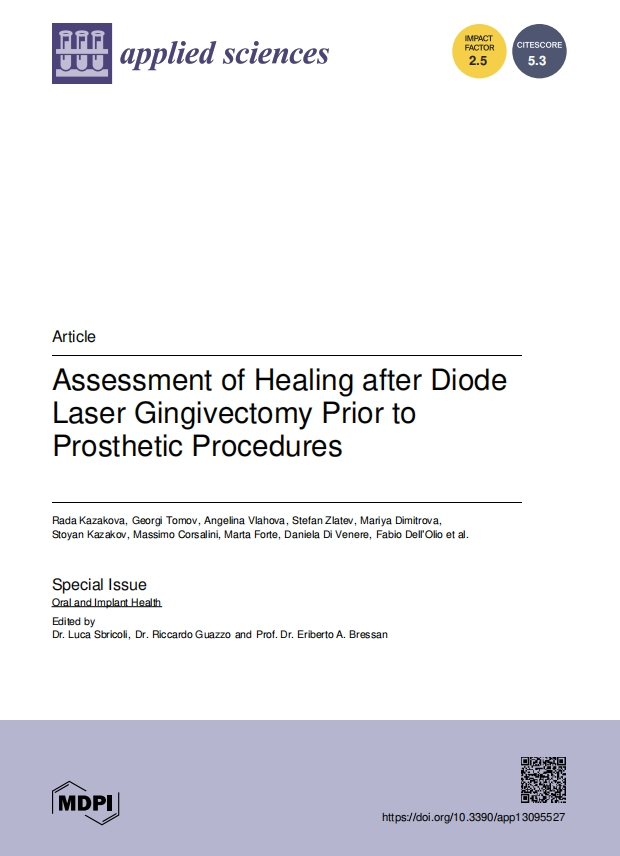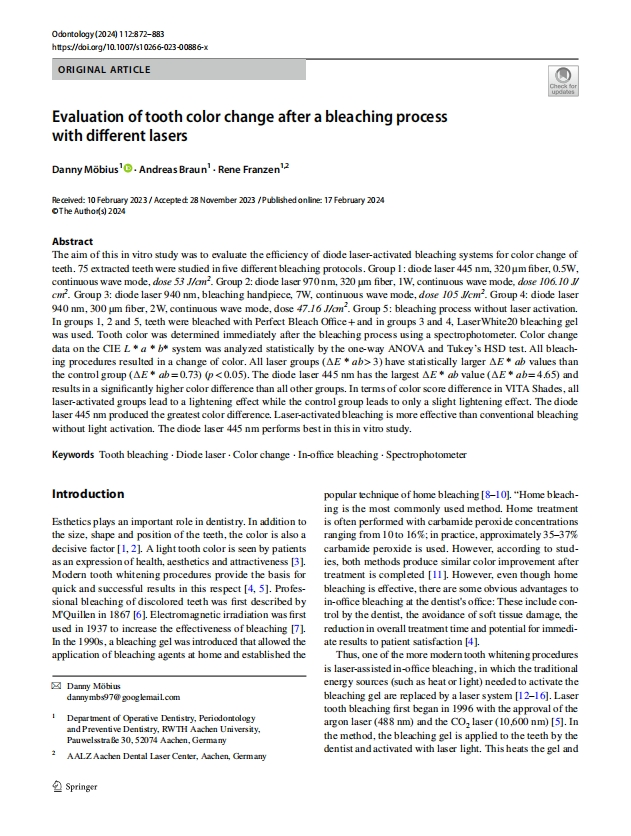The Use of Lasers in Disinfection and Cleanliness of Root Canals: a Review
Effective root canal treatment depends on thorough disinfection and prevention of reinfection. Traditional chemomechanical methods often fall short, leading to endodontic failure. Laser treatment, due to its high energy and specific properties, has been proposed for root canal cleaning and disinfection. This review examines the effects of Er, Er,Cr, Nd, and diode lasers on smear layer removal and bacterial reduction. While lasers have bactericidal effects and can enhance smear layer removal and modify root canal wall morphology, they cannot replace sodium hypochlorite. Lasers should be used as an adjunct to chemical disinfection protocols. More randomized clinical studies are needed to evaluate the outcomes of laser-assisted endodontic treatment.
